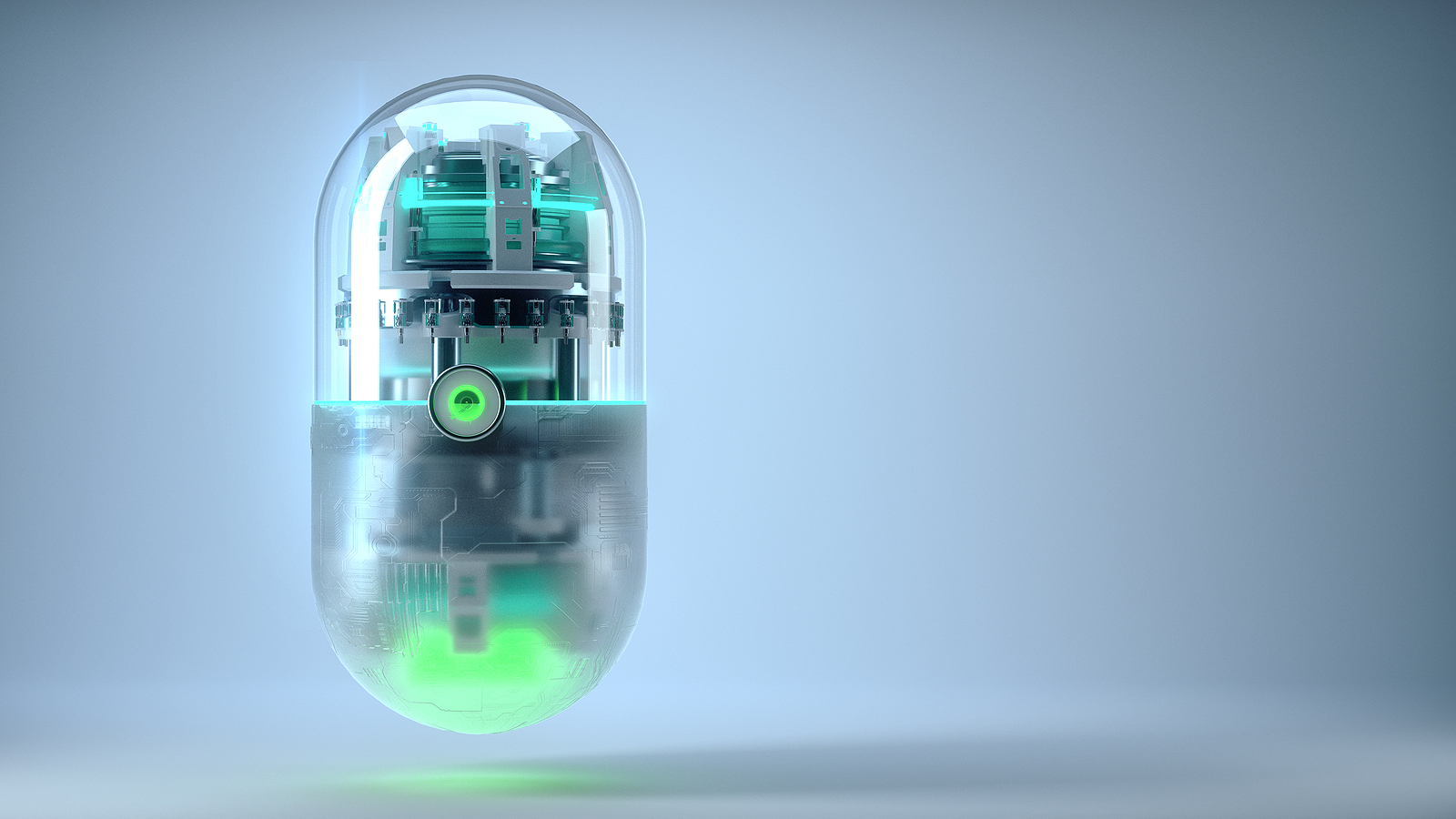
The world of medical diagnostics is undergoing a technological revolution, and at the forefront of this transformation is the pill-sized robot camera. This tiny device, which patients swallow like any other pill, can travel through the gastrointestinal (GI) tract, capturing detailed images of the digestive system, enabling doctors to diagnose a variety of conditions non-invasively. The pill camera represents a groundbreaking advancement in the field of endoscopy and has the potential to change the way we approach diagnostic procedures, offering a less invasive, more comfortable alternative to traditional methods.
In this article, we’ll explore what the pill-sized robot camera is, how it works, its advantages over conventional diagnostic tools, and its potential impact on medical care.
What is the Pill-Sized Robot Camera?
The pill-sized robot camera, also known as a capsule endoscope, is a small, swallowable medical device equipped with a miniature camera, light source, battery, and transmitter. The technology is designed to capture high-resolution images of the digestive tract as it passes through the stomach, intestines, and colon.
Once the patient swallows the capsule, it travels naturally through the GI tract, powered by the body’s peristaltic movements. As it moves, the camera takes thousands of images, transmitting them wirelessly to a wearable data recorder. After completing its journey, the pill is excreted from the body during a bowel movement, and the recorded images are analyzed by a doctor to detect any abnormalities, such as inflammation, ulcers, tumors, or bleeding.
How Does It Work?
The pill-sized robot camera is a marvel of miniaturization and engineering. Despite its small size, usually about the size of a large vitamin or capsule pill, it contains all the components necessary for capturing detailed images of the digestive system. Here’s a breakdown of how it functions:
- Camera and Lens: The capsule contains one or more tiny cameras that can take between 2 to 35 images per second. Some advanced versions are capable of capturing 360-degree views, ensuring that nothing is missed during its journey through the GI tract.
- Light Source: Since the interior of the digestive tract is dark, the capsule is equipped with LEDs that illuminate the surrounding tissues as it moves. This ensures that the camera can capture clear, high-quality images.
- Battery: The pill contains a battery that provides power for up to 8-12 hours, enough time for the capsule to travel through most of the GI tract.
- Transmitter: The camera sends the images wirelessly to a receiver that the patient wears on a belt or vest. This data is later reviewed by a physician for diagnostic purposes.
- Natural Excretion: After the capsule has completed its journey through the digestive system, it is passed out of the body naturally. The patient does not need to retrieve the capsule, as it is disposable.
Advantages Over Traditional Diagnostic Tools
The pill-sized robot camera offers numerous benefits over traditional diagnostic methods, such as standard endoscopy and colonoscopy, which typically require inserting a long, flexible tube with a camera into the body through the mouth or rectum.
- Non-Invasive and Painless
Traditional endoscopy and colonoscopy procedures can be uncomfortable and invasive, often requiring sedation or anesthesia. The capsule endoscope, on the other hand, is completely non-invasive. Patients simply swallow the capsule, eliminating the discomfort and anxiety that often accompany conventional diagnostic procedures.
- Comprehensive Imaging
One of the primary benefits of the pill-sized camera is that it can reach parts of the small intestine that are difficult to access with traditional endoscopy. The small intestine, being long and winding, is often challenging to visualize, but the capsule travels naturally through the entire digestive tract, providing comprehensive imaging that helps detect conditions that might otherwise go unnoticed.
- Reduced Risk of Complications
Because the pill-sized robot camera does not involve invasive procedures or anesthesia, it carries fewer risks than traditional endoscopy. The chances of complications like perforation or infection are significantly lower, making it a safer option for many patients.
- Convenient and Comfortable for Patients
The pill camera offers a level of convenience unmatched by traditional diagnostic procedures. There is no need for hospital visits or recovery time; patients can go about their daily activities while the capsule works its way through their system. This makes it an attractive option for those seeking a less disruptive diagnostic experience.
Applications in Medical Diagnostics
The pill-sized robot camera has a wide range of applications in diagnosing GI tract disorders. Some of the most common uses include:
- Crohn’s Disease and Ulcerative Colitis: The capsule endoscope can help detect inflammation and ulcers in the small intestine and colon, which are hallmarks of these inflammatory bowel diseases.
- Tumors and Polyps: The camera can detect abnormal growths, such as tumors or polyps, that might indicate the presence of cancer or precancerous conditions.
- Gastrointestinal Bleeding: Capsule endoscopy is particularly useful for locating the source of unexplained bleeding in the GI tract, especially in areas that are hard to reach with traditional endoscopes.
- Celiac Disease: The pill camera can help diagnose celiac disease by detecting damage to the small intestine caused by gluten intolerance.
Challenges and Future Outlook
Despite its many advantages, the pill-sized robot camera does have some limitations. For instance, it is currently unable to perform biopsies or therapeutic interventions. If a doctor detects an abnormality, a follow-up procedure with traditional endoscopy may be necessary. Additionally, while the capsule is highly effective at visualizing the small intestine, its effectiveness in the colon and stomach can sometimes be limited due to rapid movement or inadequate image capture.
However, as technology advances, future iterations of the capsule endoscope may include more features, such as biopsy capabilities or therapeutic functions. Research is also being conducted to improve battery life and camera resolution, making the pill camera even more effective for diagnostic purposes.
Conclusion
The pill-sized robot camera represents a significant leap forward in medical diagnostics, offering a non-invasive, patient-friendly alternative to traditional endoscopy. With its ability to provide comprehensive imaging of the digestive tract and its potential for wide-ranging applications, this technology has the power to revolutionize the way we diagnose and treat gastrointestinal disorders. As advancements continue, the pill camera could become a standard tool in modern medicine, making diagnostic procedures safer, faster, and more comfortable for patients.
Video with Adam Savage:
https://www.youtube.com/watch?v=FmE93ox9e2c
Skyline IT Services Disclaimer: This document is intended to offer general information and guidance. It is recommended that you consult with your internal technical and / or legal team to review all details, application and / or policies before implementation or adaptation. This document is provided “as is,” without any warranties of any kind. Skyline IT Services disclaims any liability for loss or damage arising from reliance on the information contained in this document.



